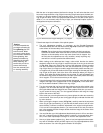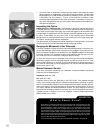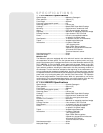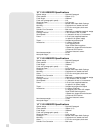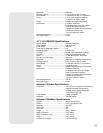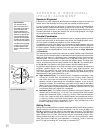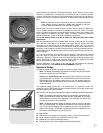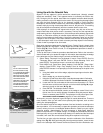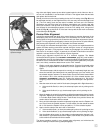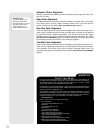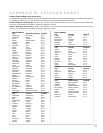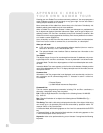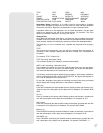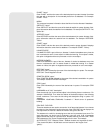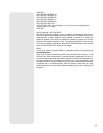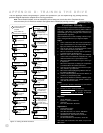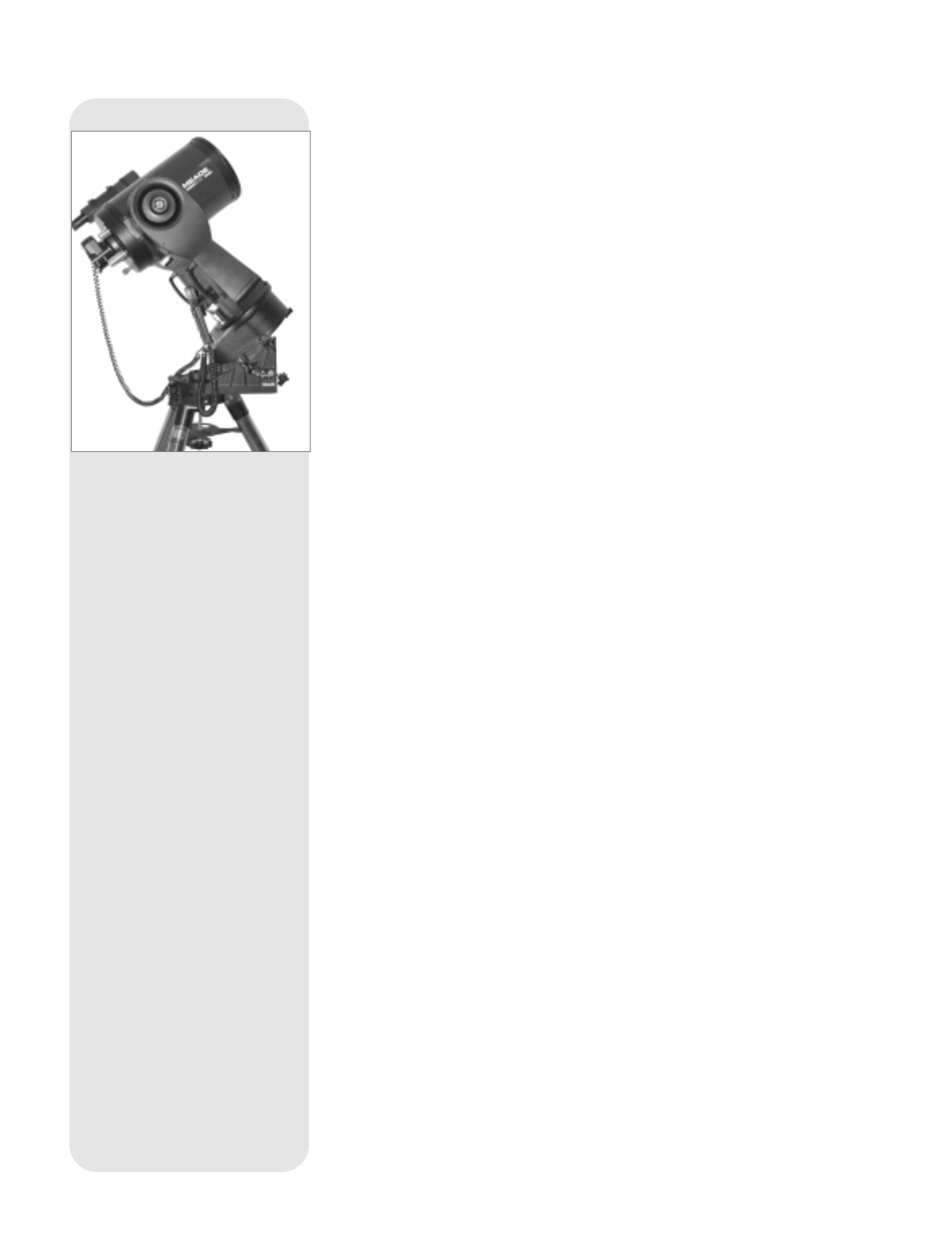
53
ting circle and slightly loosen the two bolts located under the knob. Now turn the cir-
cle unit until it reads 89.2°, the Declination of Polaris. Then tighten down the two bolts
and replace the knurled knob.
Should you wish to use the manual setting circles, the R.A. setting circle (Fig. 36) must
be calibrated manually on the Right Ascension of a star every time the telescope is set
up. (The R.A. setting circle has two sets of numbers, the inner set is for Southern
hemisphere use, while the other is for Northern hemisphere use.) Locate a star with
which you're familiar. Look up the R.A. for the star in a star chart or other aid. With the
star centered in the telescope's eyepiece, move the R.A. setting circle, using one of
knobs (C, Fig. 39), so that the R.A. of the star lines up with the tick mark on the base
of the telescope (B, Fig. 39).
Precise Polar Alignment
It should be emphasized that while doing casual observing, precise alignment of the
telescope’s polar axis to the celestial pole is not necessary. Don’t allow a time-con-
suming effort at lining up with the pole to interfere with your basic enjoyment of the tel-
escope. For long-exposure photography, however, the ground rules are quite different,
and precise polar alignment is not only advisable, but almost essential.
Even though the LX200GPS telescopes offers a very precise and sophisticated drive
system, the fewer tracking corrections required during the course of a long-exposure
photograph, the better. (“Long-exposure” means any photograph of a celestial object
that last for 10 minutes or longer). In particular, the number of Declination corrections
required is a direct function of the precision of polar alignment.
Precise polar alignment requires the use of a crosshair eyepiece. The Meade
Illuminated Reticle Eyepiece (see
OPTIONAL ACCESSORIES, page 42) is well-suited in
this application, but it is also preferable to increase the effective magnification through
the use of a 2X or 3X Barlow lens as well. Follow this procedure (particularly if the pole
star is not visible), sometimes better known as the “Drift” method:
1. Obtain a rough polar alignment as described earlier. Place the illuminated reticle
eyepiece (or eyepiece/Barlow combination) into the eyepiece holder of the tele-
scope.
2. Point the telescope, with the motor drive running, at a moderately bright star near
where the meridian (the North-South line passing through your local zenith) and
the celestial equator intersect. For best results, the star should be located within
±30 minutes in R.A. of the meridian and within ±5° of the celestial equator (see
CELESTIAL COORDINATES, page 50). Pointing the telescope at a star that is
straight up, with the Declination set to 0°, will point the telescope in the right direc-
tion.
3. Note the extent of the star’s drift in Declination (disregard drift in Right Ascension):
a. If the star drifts South (or down), the telescope’s polar axis is pointing too far
East.
b. If the star drifts North (or up), the telescope’s polar axis is pointing too far
West.
4. Move the wedge in azimuth (horizontally) to effect the appropriate change in polar
alignment. Reposition the telescope’s East-West polar axis orientation until there
is no further North-South drift by the star. Track the star for a period of time to be
certain that its Declination drift has ceased.
5. Next, point the telescope at another moderately bright star near the Eastern hori-
zon, but still near the celestial equator. For best results, the star should be about
20° or 30° above the Eastern horizon and within ± 5° of the celestial equator.
6. Again note the extent of the star’s drift in Declination:
a. If the star drifts South, (or down) the telescope’s polar axis is pointing too low.
b. If the star drifts North, (or up) the telescope’s polar axis is pointing too high.
7. Use the altitude adjust control on the wedge to make appropriate changes in alti-
tude, based on your observations above. Again, track the star for a period of time
to be certain that Declination drift has ceased.
The above procedure results in very accurate polar alignment, and minimizes the
need for tracking corrections during astrophotography.
Fig. 40: LX200GPS mounted on an
equatorial wedge.



